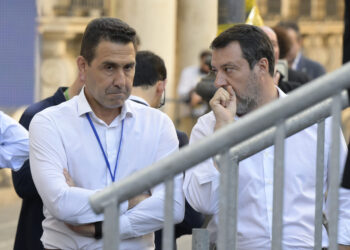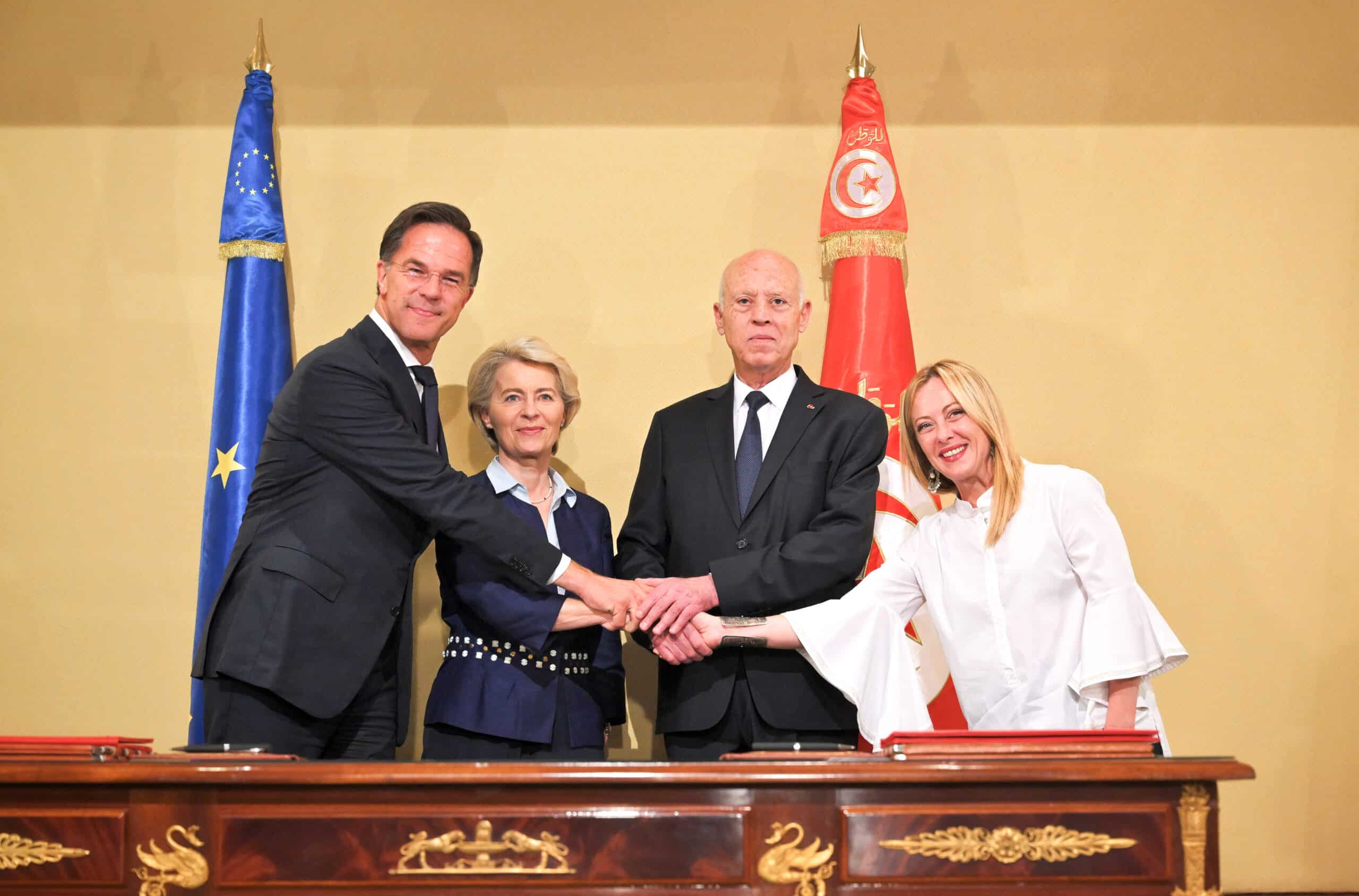Rome – After the 2018 general election, will Italy be governed by a Gentiloni-bis or by the 5-Star Movement? By a centre-right government led by Matteo Salvini, or by the President of the European Parliament, Antonio Tajani? The significant uncertainty concerning the result of Sunday ballots does not prefigure a precise scenario. Nothing can be taken for granted, and every political force is being trying to convince groups of undecideds – according to the latest public opinion polls, they were at least a third of the electorate two weeks ago, and according to several studies most of them decide only in the last 48 hours – in order to make a leap in ahead of the forecast. The only sure thing about the relations with the EU is that whoever will be the next tenant of Palazzo Chigi, Italy will remain engaged in the battle against economic austerity, with varying degrees of intensity depending on the majority that will support the government. By combining analysis of the possible groupings with an analysis of the electoral programs, let’s try to hypothesize possible scenarios, and understand what European partners can expect from Italy after March 4.
Centre-right government – The coalition closest to a parliamentary majority appears to be the one of centre-right. Without going into the details of the electoral rules, it should be noted that the new law does not provide for the indication of a candidate Prime Minister, triggering internal competition within the same sides. Thus, the person appointed to the President of the Republic, Sergio Mattarella, to lead a majority government of Forza Italia, Lega Nord, Fratelli d’Italia and Noi con l’Italia will depend on the result of the two largest parties, Forza Italia and Lega Nord. In case of a victory of the Lega Norda, Salvini will be that man, as only the leader of Fratelli d’Italia Giorgia Meloni and Salvini himself seem to believe will happen. It will be Tajani instead, if Berlusconi’s party gets more votes.
In both cases, the coalition program – “binding” in the opinion of all the underwriters – provides for a generic “less constraints from Europe”, which includes a “revision of the treaties” and a “no to austerity policies”, seasoned by a “reduction of the surplus of the Italian annual payments to the EU budget”, the protection of the Made in Italy and the “prevalence of our Constitution over the European law”, impossible to realize if not by modifying the constitution itself.
Leaving the single currency is not even mentioned. On this point, Lega Nord is no longer fighting so fiercely, and the electoral slogans on the “failed experiment” seem destined to be withdrawn. If Salvini could do it, the maximum that Berlusconi seems willing to grant is to evaluate the hypothesis of a national currency to be coupled with the Euro, but even this also seems more an electoral promise, made to please the ally and maybe grab some votes on its ground. Italy will be a somewhat more aggressive partner if the leadership of the government is granted to the Lega Nord. Only apparently though, as in the end the Lega’s frenzy would be contained by Forza Italia, as assured by Berlusconi during a visit to Brussels. The leader of Forza Italia has no intention of deteriorating the strengthened relations with the EPP in fact, even in consideration that if Tajani does not make his way to Palazzo Chigi, he will become a possible “spitzenkandidat” of the EPP at the head of the EU Commission.
Government of broad understandings – Given that the coalition of the Democratic Party, a party that aims to become the first parliamentary group, will hardly have the numbers to govern, even with the contribution of Liberi e Uguali, the only hypothesis that includes its members in the government it is that of an inclusive government. If indeed the MPs led by the secretary Matteo Renzi will be the most numerous, it is uncertain for them to be enough to form a majority united with those of Forza Italia. Indeed, such a unification must also count on all the central parties that will have seats in Parliament, and even so they may not be enough. The understandings should therefore be significantly broad, and possibly be extend also to Liberi e Uguali.
The party led by the President of the Senate Pietro Grasso, however, is available only to make “a government with a single purpose, changing the electoral law” and immediately return to the polls. This is also a possible scenario: that the XVIII legislature starts with a government with a single purpose. It wouldn’t be the first time. Even Enrico Letta, when he first settled in Palazzo Chigi, would only have to change the electoral law and do a few other things to get back to the polls soon. Actually, the legislature, after a re-shuffling of parliamentary groups and the birth of the already deceased NCD of Angelino Alfano, not only had its course, but was about to go down in history like the one in which the most important modification of the Constitution took place.
In such a scenario, with or without Liberi e Uguali, the most accredited hypothesis is the creation of a Gentiloni-bis government, except for new names that could be indicated during the consultations at the Presidency of the Republic. The current Prime Minister is well-accepted by Berlusconi. He is “a kind, sober person, he has changed the way of dealing as compared to Renzi”, said recently the leader of Forza Italia, who is not even remotely displease by the past as Minister of Communications. Even the secretary of the PD seems to have resigned himself to the idea that Gentiloni is the only man he pleases on which the forces required for a majority, broad agreement or for a single purpose, can converge.
By definition, it is impossible to know in advance the programs of a government that would come from the mediation among very heterogeneous forces. However, it is easy to assume that a government participated by the Democratic Party will not differ much from the line held in recent years. The battle for flexibility, the will to loosen the Fiscal Compact, the policy of investments in Africa and the target of binding the provision of EU funds to the compliance with the agreements on the management of migrants: there are all items on which Forza Italia would not labour to converge on.
Di Maio Government – If everyone is sure that the first party in percentage terms will be the 5-Star Movement, the self-sufficiency of the 5SM parliamentary brigade in supporting its own political leader, Luigi di Maio, at the head of a single-party government appears to be equally impossible. Yesterday, Di Maio presented the whole government team. It will hardly coincide with the next government to take the oath at the Quirinale but, looking at the names, almost all technicians, one can get the confirmation that the 5SM really wants to start a dialogue with the other forces, particularly on the left. If it is sort of political fiction to imagine Renzi supporting a 5-Star government, the hypothesis of a collaboration with Liberi e Uguali is “less unreal”. If the President of the Chamber of Deputies Laura Boldrini is completely contrary to the hypothesis, Grasso is not so categorical and Bersani had already tried – as secretary of the Democratic Party – to govern with the consent of the 5-Star Movement.
Was the Movement to have sufficient strength to demand and obtain the assignment of the task of forming a government by President Mattarella, not only Liberi e Uguali but also a few parts of the Democratic Party and other scattered MPs could converge on Di Maio’s proposal. This is not one of the most accredited hypotheses, but if it had to occur, the European partners would have little to fear. For some time, the Movement has relegated the exit from the single currency to an extreme ratio, in case it was not possible to negotiate a loosening of the budget constraints. And a further reassurance comes from their Minister appointed for the Economy, Andrea Roventini, who assured to the Italian daily IlSole24Ore: “In our Economic and Financial Planning Document there will be no room for bizarre or utopian ideas, but for sure we will pay more attention to the theme of growth and public investment, while maintaining the balance of public accounts”.
Lega and 5-Star Movement Government – The possibility of a government led by the 5-Star Movement and Lega Nord is the scenario that most terrifies Europe, but even this, although possible, doesn’t seem to be among the most probable ones. Not much because both sides rejected the hypothesis forcefully – even if Salvini had made some opening in the past – but because the two parliamentarian groups alone wouldn’t have the majority and would hardly be able to involve other formations besides that of Giorgia Meloni.
The program of such a government would be the most indigestible in Brussels, being them the more Eurosceptic forces of the entire European Parliament. The pressures towards sovereignist ideals in the Lega Nord wouldn’t be slowed down by Forza Italia. The pension reform, to which both movements aim, could end up in an unacceptable balance for European partners. Compliance with the 3% limit for the deficit / GDP ratio wouldn’t be considered as binding by a yellow-green government. The implementation of the Bolkestein directive on public licenses would risk to remain unfulfilled, and even the law incorporating the bail-in law could be revised. Not to mention that, with regard to immigration, this kind of government could be closer to the group of Visegrad than to the positions that have made headway in the Franco-German axis. To sum up, a Lega Nord 5-Star Movement government would be a nightmare for many, who breathe a sigh of relief while imagining that this is the most remote of hypotheses. Just a couple of days will be enough to find out how it everything will end up.

![Ursula von der Leyen. La presidente uscente della Commissione europea cerca l'inizio del secondo mandato con il voto del Parlamento europeo alla squadra di commissari [foto: European Commission]](https://www.eunews.it/wp-content/uploads/2024/11/vld-2411-350x250.jpg)

![palazzo chigi [foto: archivio]](https://www.eunews.it/wp-content/uploads/2016/07/palazzo-chigi.jpg)








![Una donna controlla le informazioni sul cibo specificate sulla confezione [foto: archivio]](https://www.eunews.it/wp-content/uploads/2014/12/Etichette-alimentari.jpg)
